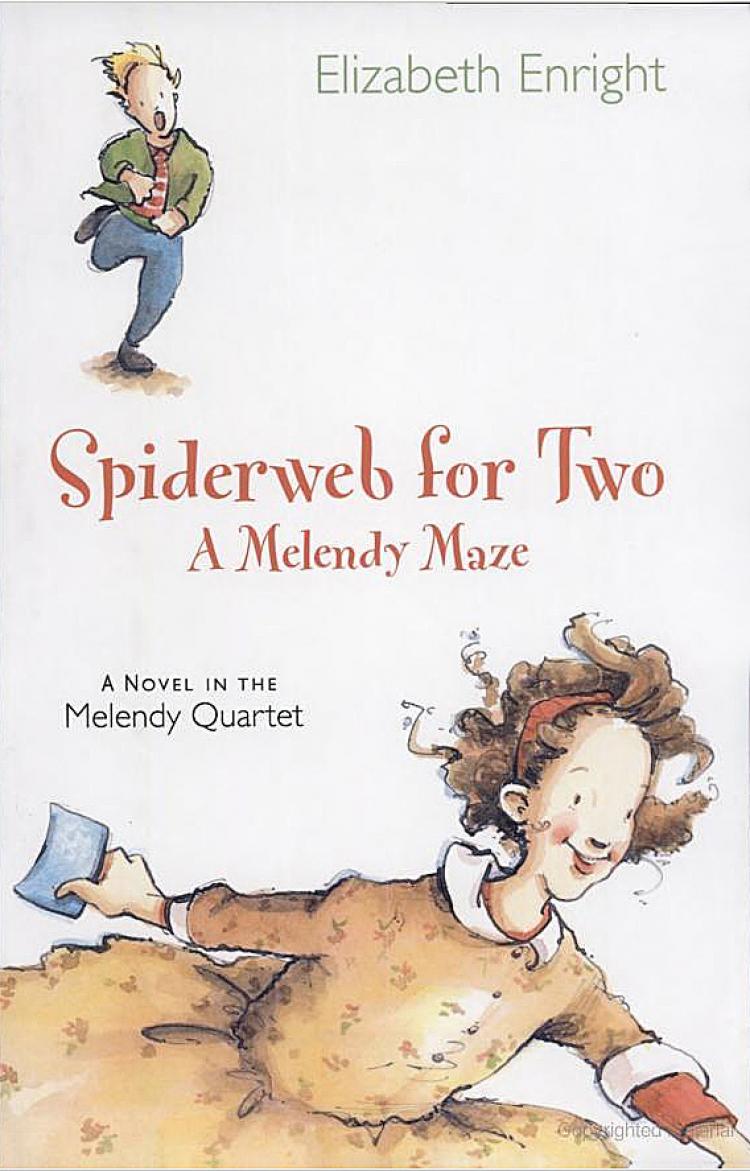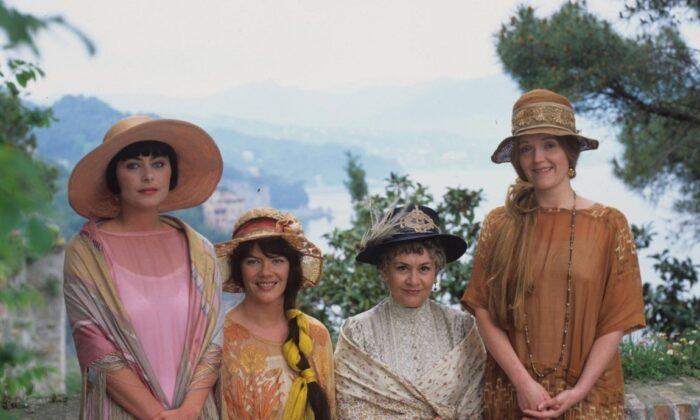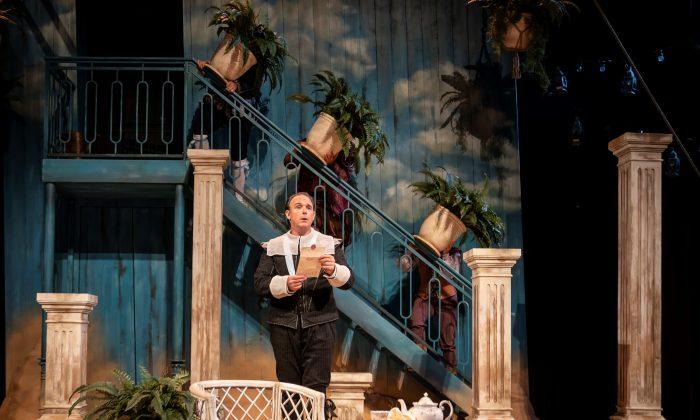When I failed to find a copy of Little Women at the local library for my nine-year-old daughter who wanted to reread it, the librarian suggested a title I had never heard of: Spiderweb for Two.
I was not acquainted with the Newbery Award-winning author, Elizabeth Enright, either, but am very satisfied that I now know her—Spiderweb is an engaging read.
Spiderweb for Two: A Melendy Maze is the last of the Melendy Quartet. The Quartet was published between 1941 and 1951 and chronicles the adventures of the Melendy family, particularly the four children.
Certainly, Spiderweb for Two can stand alone, without its older companion pieces introducing it.
Here, practical Oliver and imaginative Randy Melendy are lonely because their older rambunctious siblings are away at school. They have nothing to do. Their father is away, too, on business, and their beloved housekeeper cannot seem to cheer them.
But, when a mysterious riddle arrives in the mail, a riddle that insists it must remain a secret, the pair must put their heads together to solve it. Solving one clue leads to the discovery of the next, until, taken together, their sum equals a year of adventure, concluding with a final and happy surprise.
The clues more than kept my daughter engaged and eager to learn what was coming next. Unlike many mysteries, where the reader passively watches the enigma being unraveled, these clues beg the reader to join in the fun. They ranged in difficulty from one that she could answer in a moment, (“That’s easy”) to several that had us both scratching our heads. All the clues—poems really—are beautifully written and intriguing. Moreover, they lead the reader from topics as far afield as ancient Grecian history to Oriole nests.
The Melendys explore their house, grounds, neighbors’ yards and houses, a store in town, and a graveyard. These places open up for the reader and ring very true, as children are the truer owners of their homes and neighborhoods in the sense that they hold them in so much more acute regard than do adults.
Best yet, both Melendy children, although real human beings, manage to treat each other well, treat the adults they visit with respect, and treat their family, friends, and pets with warm devotion—this alone makes the book a treasure among children’s books.
I, like the Melendy children who often take wrong turns on their searches, started this Melendy Quartet at the wrong end. But no end is the wrong place to start when it provides the readers a happy experience. In fact, this experience leads me to three other titles that precede this one in the Quartet.
I was not acquainted with the Newbery Award-winning author, Elizabeth Enright, either, but am very satisfied that I now know her—Spiderweb is an engaging read.
Spiderweb for Two: A Melendy Maze is the last of the Melendy Quartet. The Quartet was published between 1941 and 1951 and chronicles the adventures of the Melendy family, particularly the four children.
Certainly, Spiderweb for Two can stand alone, without its older companion pieces introducing it.
Here, practical Oliver and imaginative Randy Melendy are lonely because their older rambunctious siblings are away at school. They have nothing to do. Their father is away, too, on business, and their beloved housekeeper cannot seem to cheer them.
But, when a mysterious riddle arrives in the mail, a riddle that insists it must remain a secret, the pair must put their heads together to solve it. Solving one clue leads to the discovery of the next, until, taken together, their sum equals a year of adventure, concluding with a final and happy surprise.
The clues more than kept my daughter engaged and eager to learn what was coming next. Unlike many mysteries, where the reader passively watches the enigma being unraveled, these clues beg the reader to join in the fun. They ranged in difficulty from one that she could answer in a moment, (“That’s easy”) to several that had us both scratching our heads. All the clues—poems really—are beautifully written and intriguing. Moreover, they lead the reader from topics as far afield as ancient Grecian history to Oriole nests.
The Melendys explore their house, grounds, neighbors’ yards and houses, a store in town, and a graveyard. These places open up for the reader and ring very true, as children are the truer owners of their homes and neighborhoods in the sense that they hold them in so much more acute regard than do adults.
Best yet, both Melendy children, although real human beings, manage to treat each other well, treat the adults they visit with respect, and treat their family, friends, and pets with warm devotion—this alone makes the book a treasure among children’s books.
I, like the Melendy children who often take wrong turns on their searches, started this Melendy Quartet at the wrong end. But no end is the wrong place to start when it provides the readers a happy experience. In fact, this experience leads me to three other titles that precede this one in the Quartet.







